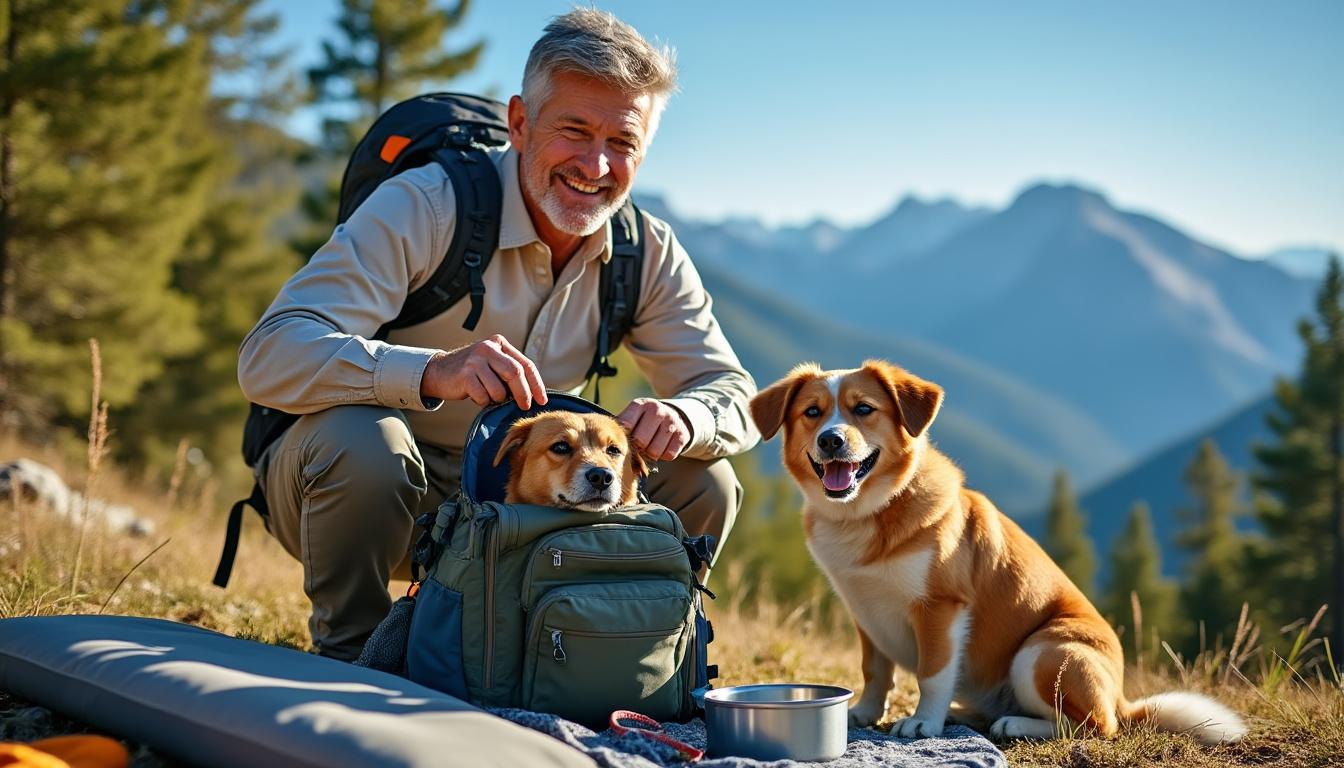As travel plans increasingly include furry companions, Cesar Millan, renowned expert in dog training and canine wellness, shares essential advice for ensuring pet-friendly travel is smooth, safe, and enjoyable. Eschewing the typical reliance on treats, Millan focuses on the foundational elements that govern dog behavior and pet care during journeys. His insights emphasize mental preparation, calm leadership, and discipline—ingredients that not only enhance dog safety but also elevate the overall experience of traveling with dogs in 2025.
Mastering Pet Travel Preparation and Maintaining Canine Mental Stability
Before hitting the road or boarding a plane, preparation is paramount to ensure your dog’s comfort and calmness. Cesar Millan highlights the importance of a dog’s mental state over mere physical readiness. Traveling with a restless or overly energetic dog can lead to anxiety and discomfort, so owners must ensure their pets are relaxed prior to departure. This approach aligns with broader principles in pet care that stress mental relaxation, akin to meditation, to foster a cooperative mindset in dogs.
- Exercise your dog adequately before travel to reduce excess energy
- Practice ‘waiting’ commands that promote calmness and patience
- Avoid rushing or forcing your dog into crates or vehicles when stressed
- Introduce travel gear for dogs gradually to build familiarity
- Ensure puppy essentials like bedding and favorite toys are accessible
| Preparation Aspect | Purpose | Recommended Actions |
|---|---|---|
| Physical Energy Management | Reduce restlessness in transit | Exercise before departure, calm play sessions |
| Mental State Conditioning | Encourage patience and calmness | Practice “waiting” commands, meditation-like relaxation |
| Travel Gear Familiarization | Allow comfort and security | Gradually introduce crates, collars, and harnesses |
The Crucial Role of Transition and Environment Adaptation in Pet Travel
Upon arriving at a new location, the adjustment period can be stressful for dogs due to unfamiliar sights, smells, and sounds. Cesar Millan stresses the importance of a controlled “migration” routine, prioritizing walks that help dogs recognize the new environment and accept it as part of the pack’s territory. Ensuring dogs walk beside or follow their owner during these first explorations expresses leadership and security, core tenets of effective dog training.
- Conduct a thorough walk immediately after arrival to relieve anxiety
- Use consistent walking positions to reinforce role as pack leader
- Encourage exploration while maintaining close proximity for safety
- Observe dog’s reaction to novel stimuli and adjust pace accordingly
- Incorporate pet-friendly travel spots recommended in destination guides for enhanced enjoyment
| Transition Factor | Dog’s Reaction | Owner’s Role |
|---|---|---|
| New Scents & Sounds | Curiosity or anxiety | Lead calmly, reassure through presence |
| Unfamiliar Surroundings | Restlessness or hesitation | Consistent walking routine beside the dog |
| Change in Routine | Confusion or stress | Create clear rules and signals during walk |
Maintaining Consistent Calm Energy to Foster Dog Safety and Confidence
During pet travel, Cesar Millan emphasizes that the owner’s energy is a beacon for the dog. Consistency in calmness, confidence, and love creates an atmosphere of security, allowing dogs to trust the journey ahead. An owner’s anxiety or uncertainty can exacerbate a dog’s distress, making pet travel problematic. This principle highlights a fundamental component of dog behavior: the human must embody a stable energy field to facilitate canine wellness.
- Adopt a composed demeanour regardless of travel challenges
- Practice deep breathing or mindfulness to sustain calm energy
- Provide silent reassurance through steady presence rather than excessive affection
- Use travel gear for dogs that supports comfort without overstimulating senses
- Learn and implement pet separation anxiety tips that focus on energy management
| Human Energy Trait | Effect on Dog | Recommended Owner Practice |
|---|---|---|
| Calmness | Reduces dog’s anxiety | Maintain silence and steady presence |
| Confidence | Builds dog’s trust | Lead walks and interactions decisively |
| Love without Overindulgence | Rewards good behavior, prevents discomfort nurturing | Give affection selectively when dog is comfortable |
Clear Rules and Discipline: Cornerstones of Puppy Essentials On-the-Go
One of the pillars in Cesar Millan’s dog training approach is the “exercise, discipline, affection” formula. Establishing clear rules, boundaries, and limitations during travel helps dogs adapt their behavior to new surroundings. Even with advanced technology like wireless dog fences or smart collars, the owner’s leadership is crucial to interpret these tools effectively, guaranteeing dog safety and freedom.
- Institute consistent rules about behaviors allowed in transit and lodging
- Reinforce boundaries with appropriate discipline balanced by affection
- Integrate travel gear for dogs, such as Halo collars, to complement training
- Maintain regular exercise to reduce energy buildup and behavioral issues
- Prepare mentally for handling new challenges to respond calmly and efficiently
| Training Element | Description | Benefit for Travel |
|---|---|---|
| Exercise | Physical activity to expend energy | Promotes calmness, reduces restlessness |
| Discipline | Rules and boundaries enforcement | Ensures predictable, safe dog behavior |
| Affection | Reward for good behavior | Strengthens positive associations during travel |
Patience and Detachment: Advanced Dog Training for Stress-Free Travel
Teaching dogs patience and detachment is central to reducing travel anxiety. According to Cesar Millan, a dog’s inability to remain calm or wait quietly in the car stems from lacking these skills. Training your pet to detach and not always follow humans everywhere builds mental resilience, essential for pet travel where flexibility and waiting are required. These lessons align with the broader goals of canine wellness and responsible pet travel.
- Implement waiting exercises both at home and before travel
- Encourage detachment to prevent clinginess in new environments
- Use calm affirmation methods modeled after professional paramedics: silence, calmness, surrender
- Gradually extend waiting times to build patience endurance
- Complement training with pet travel gear designed for comfort and security
| Training Focus | Method | Travel Benefit |
|---|---|---|
| Patience | Teach waiting commands and calm stillness | Reduces anxiety during stops or delays |
| Detachment | Limit following behavior, encourage independent calm | Facilitates transitions and reduces clinginess |
| Calm Affirmation | Use techniques of silence and steady presence | Enhances sense of security and reduces stress |
For those interested in detailed practical demonstrations, Cesar Millan’s videos on pet travel essentials provide valuable insights into applying these principles effectively.
Travelers planning to take their dogs on trips will benefit from integrating Millan’s advice with current travel hacks and deals, for example by exploring offers in summer travel deals strategies or navigating airline protocols using TSA travel tips to ensure smooth pet-friendly travel experiences.
For those venturing internationally, destination guides like Japan travel insider tips or Israel hotels and attractions guide offer valuable context for responsible dog behavior and pet safety in unfamiliar places. Additionally, savvy travelers might consult smart budget travel strategies to optimize trips with pets while managing expenses efficiently.
Frequently Asked Questions About Traveling With Dogs
- How can I reduce my dog’s anxiety during travel?
Prepare your dog physically and mentally before trips, maintain calm energy, and create consistent routines to alleviate stress. - What are some essential travel gear for dogs?
Include comfortable bedding, familiar toys, proper collars or harnesses like the Halo collar, and portable food and water bowls to ensure comfort. - Is exercise really important before traveling with my dog?
Yes, exercise helps expend extra energy that might otherwise cause restlessness and anxiety during transit. - Should I use treats to calm my dog during travel?
Milan’s advice suggests focusing on stable mental state and calm leadership rather than treats to encourage lasting good behavior. - How do I teach my dog patience for long journeys?
Practice waiting commands gradually and reinforce calm, detached behavior both at home and on the road.


